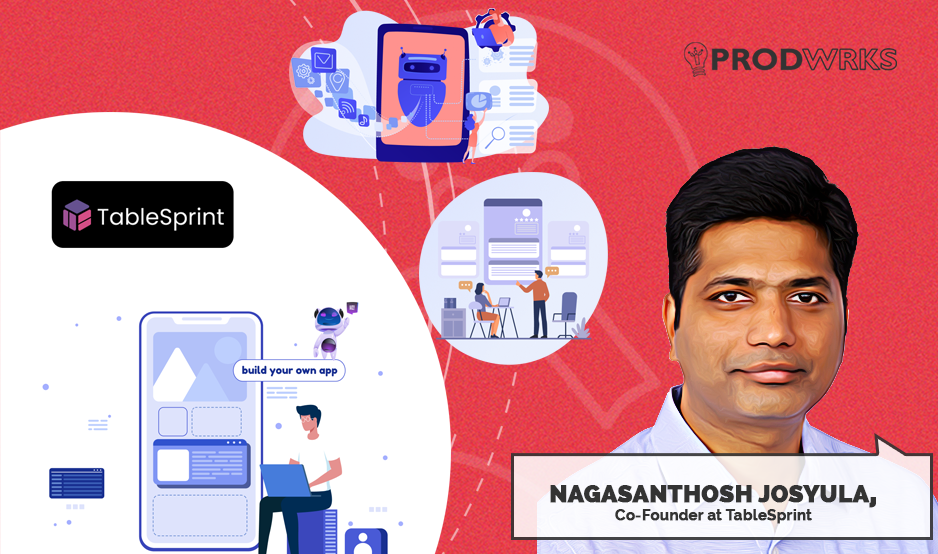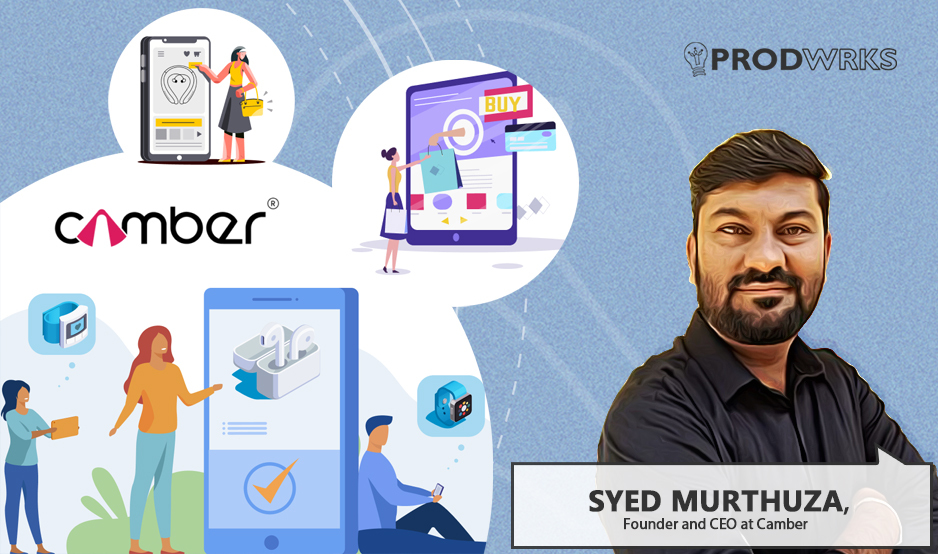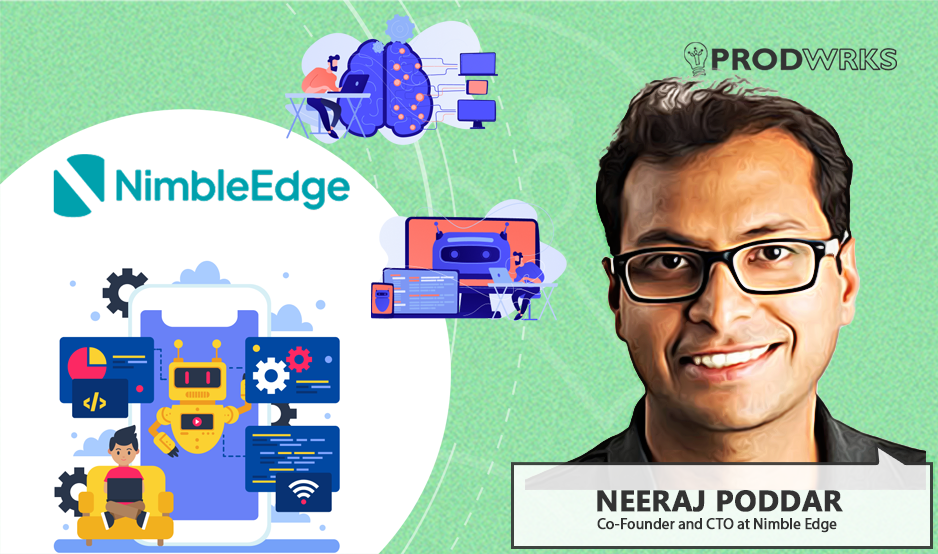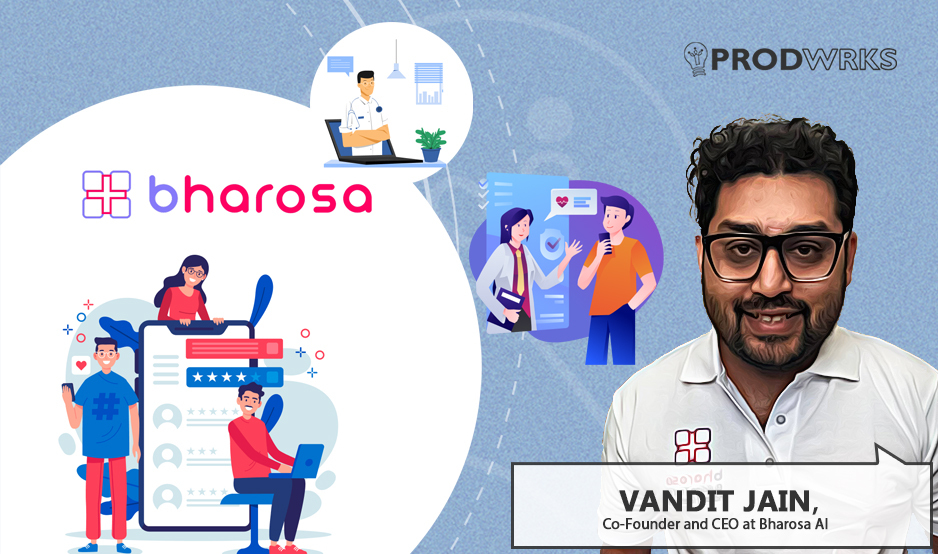
“Out of a hundred ideas, maybe ten make it to an IT sprint,” he says. “The rest just stay pending. Most teams give up on even asking.”
“If I’ve never built a CRM before, I wouldn’t know what columns or data to start with, but our platform does. It brings in structure and best practices from similar use cases so you don’t have to begin with a blank page.”
Enterprise Tech Needs a B2C Rethink
Coming from a background in human-computer interaction (Carnegie Mellon University), Nagasanthosh was motivated to simplify the adoption of technology for enterprises in ways that actually make a difference on the ground.
While B2C applications often came with great user experience, B2B tools were frequently held back by delays and shifting business priorities. Most digital transformation projects are messy and unpredictable. The process used to build them still tries to assume full clarity from day one. That rigidity leads to delays, wasted effort, and failure.
Nagasanthosh says, “I’ve been part of digital transformation teams, and what we kept seeing both in our own work and when talking to others was that these projects were tough to execute and drained a lot of time and budget. The success rate was low, with about 35% of them failing, and teams hesitated to even start in the first place.”
“Every business team has a long list of things they want to digitize. Out of 100, maybe only 10 get picked up by IT. The rest stayed pending, which led to massive backlogs in the industry. We saw a huge whitespace that needed to be addressed here.”
Rethinking How Internal Tools Get Built Inside Enterprises
Most digital transformation efforts stall because of misalignment between people, processes, and technology. Table sprint is structured to address that gap by letting teams build their own tools interactively using vibe coding, without relying on a fixed plan or technical team.
Earlier models followed a fixed product plus customization cycle. TableSprint reverses that. Users start with their needs, and the application gets built around them.
“Each customer comes with their own context,” Nagasanthosh explains. “It’s actually easier to create something new for them than to force-fit a standard product.”
One of the biggest challenges non-technical teams face is dealing with data. TableSprint began solving this by focusing on three key areas:
- Ready-to-use databases: Every deployment comes with a pre-configured database, so teams don’t have to set one up manually, a task that’s often too technical or time-consuming for business users.
- Help with data modelling: The platform guides users in shaping their data models, helping them define how information should be organized to support their applications.
- Layered views: Once the data model is in place, teams can build layered views, interfaces and dashboards that sit directly on top of the data. This makes it easier to focus on the user interaction part without writing complex code.
Teams using TableSprint can also create basic automation flows with AI agents in the platform that can handle simple tasks or data operations. While Nagasanthosh admits how most users haven’t fully figured out what they want to automate yet, most of them are open to trying things out and experimenting
He says, “Not everyone has figured out what kind of tasks are best for agents or what kind of agents they want to build. But most people want to experiment, create things, and test them out. That is where vibe coding helps. It lets them try, make decisions, and move forward. Even if they go only 30% of the way, they have already made progress, and they can scale later.”
The Segments Where TableSprint Is Seeing Demand
“These are companies still using old, inflexible software built years ago. Their operations have changed, but the systems haven’t. They can’t replace them easily because they were expensive, and adding new tools on top only increases complexity and cost.”
Many manufacturing workflows, like raw material sourcing, machine audits, or vendor tracking, are simple and repetitive. But because legacy systems can’t adapt, these basic needs remain unmet. TableSprint finds traction here by letting teams build what they need quickly, without overhauling existing infrastructure.
The second segment is banking. Here, teams often have a clear need to digitize internal processes such as IT workflows, dashboards, and partner management. But they end up stuck, waiting for approvals or resources that never arrive. TableSprint gives them a way to move forward on their own, building what they need without relying on developers or waiting in line.
The third set of use cases comes from companies with highly specific, often one-off requirements that don’t fit standard software solutions. Building custom applications often takes a year or more, and in these cases, teams have used TableSprint to put together workable solutions in a few months
Nagasanthosh explains, “We’ve done projects in e-commerce, inventory management, and so on, where the requirements are very specific to that company. If you try to build an application from scratch, it might take a year. But we’ve been able to solve those problems in two to three months, which has a big impact on their ROI, and they come in for that.”
Dev Consult AI
One of the core features of TableSprint is Dev Consult. It’s a full-stack AI assistant that lets users describe what they need in natural language and then builds data stores, UIs, workflows, and integrations on the platform.
Acting as a virtual analyst, developer, and cloud architect, it crafts the backend and frontend structure in real time, guiding users through prototyping and implementation. Dev Consult AI is one of the ways users get started. It helps teams articulate what they need, even if they don’t know how to describe it in technical terms.
Nagasanthosh says that this feature has become an entry point for product adoption.
“Dev Consult opens up the platform for people who may not even know what exactly to ask. They can still start exploring and end up creating something close to what they need and help users adopt the platform easily.”
How TableSprint Enters Teams and Scales Across Organisations
Most of TableSprint’s users discovered the product on their own. Nagasanthosh says Product Hunt gave them a small boost, but it wasn’t what drove signups. Most users find the platform through a simple Google search.
They credit much of their user growth to the content they created, including explainer videos, walkthroughs and use case breakdowns. Nagasanthosh says they focused on showing how things could be built using the platform, with vibe coding at the center.
Building a community around that process became a key part of their strategy.
“We are seeing that once one department adopts us, it starts spreading into other departments. So we can integrate other workflows. It usually starts with one champion in the organisation or team, then moves to other teams. That is how it is penetrating.”
“We go by subscription per user and define different parameters for each plan. If someone crosses 30 users, we move them to a custom plan. And if the application demands much higher than listed, we have a separate conversation with the client.”
How Early Feedback Reshaped the User Journey
In its early days, TableSprint offered free access to a wide range of users. The goal was to learn how different people interacted with the product and where they struggled. Nagasanthosh admits that while the feedback didn’t lead to major engineering changes, it had a strong impact on the user experience and flow.
One of the biggest changes came from users often not knowing what to do once they landed. They would arrive on the page, watch a couple of example videos and then get stuck.
Based on that feedback, they redesigned the experience so users would know how to start building or what to explore right away. The system stayed the same. The way people moved through it changed entirely.
Nagasanthosh says, “Someone would come in and get confused, asking what to do next. Most of the input we got helped us guide the user more clearly.”
Where the No-Code Movement Is Headed
As platforms like TableSprint evolve, Nagasanthosh sees broader shifts unfolding in how software gets built. What began as chat-based interaction could soon move toward voice-driven workflows and collaborative building in real time, especially as larger enterprises demand team-based review, security, and scaling.
He points to how fast UI generation tools like Webflow have become, and how platforms like Replicate are simplifying backend integration. But speed alone isn’t enough. The real challenge, he says, is in tying everything together.
“Some tools focus just on the frontend, others on the backend,” he says. “But for end-user applications, you need both. The future belongs to platforms that can integrate the full stack UI, logic, data, and deployment in one place.”



